Last Updated on June 13, 2024 by teamobn
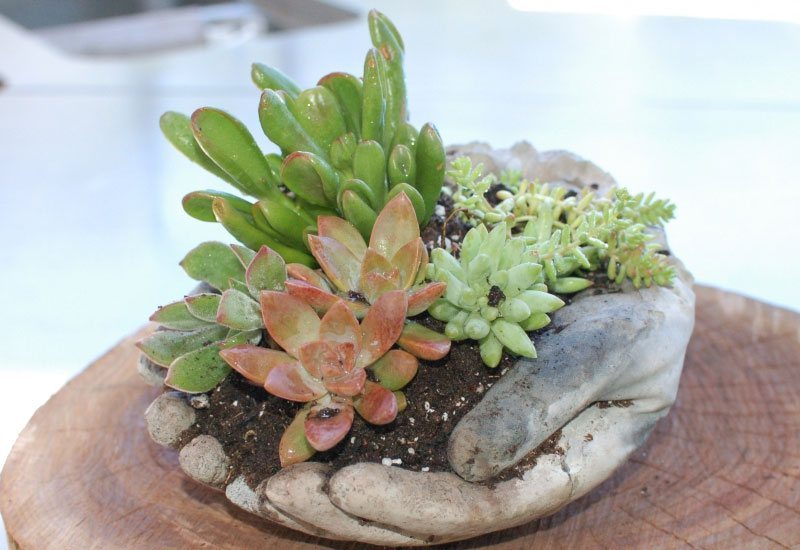
If you’re looking for something a little different, these hand planters are sure to appeal. They’re made from hypertufa, a material that resembles stone but is much lighter and easier to work with.
Relax! These are ‘armless hypertufa hands 😀
Hypertufa is a ‘rock’ made from aggregates bonded together with Portland cement. It’s a manufactured substitute for natural tufa, which is a slowly precipitated limestone rock. Being very porous like the real thing, hypertufa is popular for making garden ornaments.
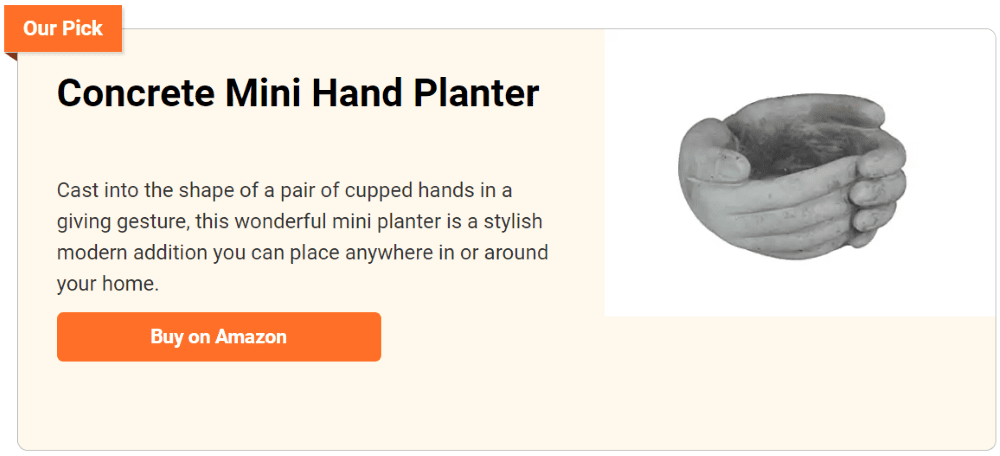
Hand-designed planters are extremely popular today and can be seen just about everywhere. They are often used in malls and roadside landscaping, but can also be a beautiful addition to any home.
Hand planter comes in a wide variety of styles and colors, so it’s easy to find one that will fit your specific needs. Whether you’re looking for a small planter for your desk or a large one for your patio, you’re sure to find the perfect hand-designed planter for your space.
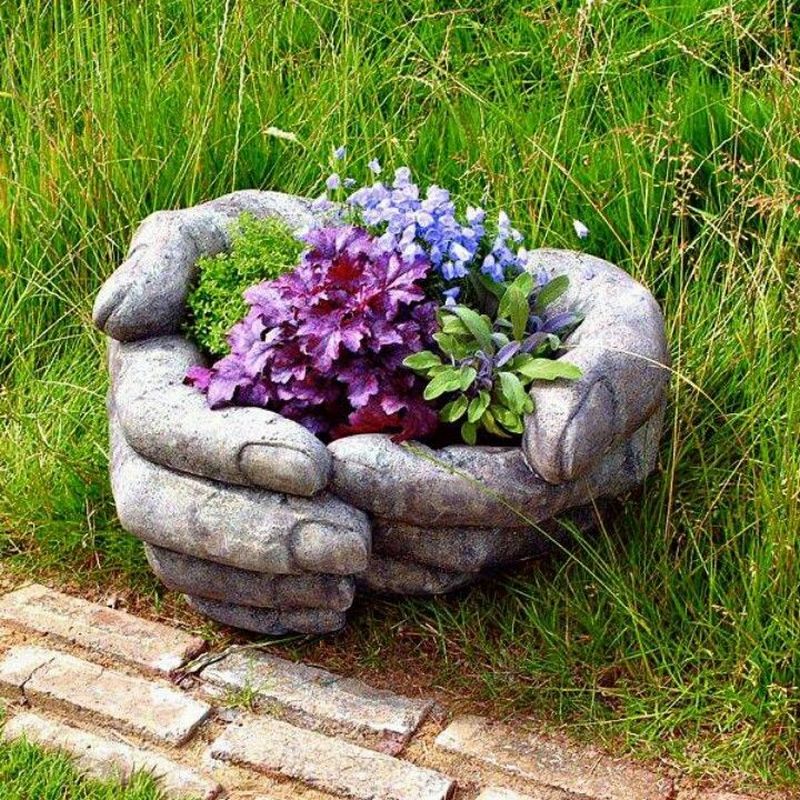
These hand-designed planters are perfect for planting succulents and would make a great centerpiece on a table in your outdoor living space. You can also personalize them to fit the theme of your garden.
To further illustrate, if you have a beach-themed garden, you could paint the hand planter with a beach scene. This would add to the atmosphere of your garden and make it feel more like a vacation spot.
Similarly, if you have a more rustic garden, you could distress the wood to give the hand planter a more antique look. This would add character and charm to your garden, making it more inviting and unique.
Making a Hand Planter
First, mix together Portland cement, peat moss, and coarse sand in a ratio of 1:1:2.
When mixing together Portland cement, peat moss, and coarse sand, it is important to use a ratio of 1:1:2. This ensures that the cement will properly bind with the sand and peat moss, creating a strong and sturdy mixture.
Add water a little at a time until the mixture is the consistency of oatmeal.
Add a small amount of water at a time, stirring constantly until the mixture resembles the consistency of oatmeal. You may need to add more water if the mixture is too thick. Then, use a trowel to scoop the mixture into a bucket. Add more water, a little at a time, and mix thoroughly.
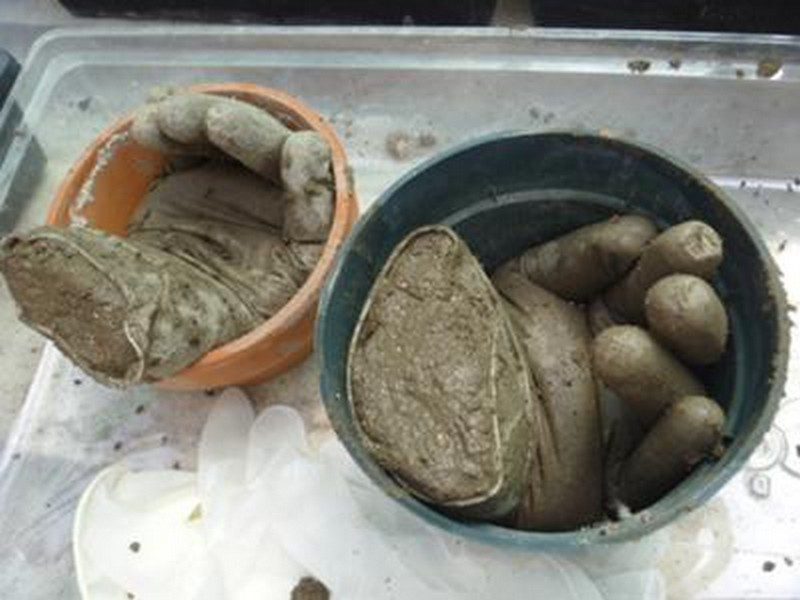
Once the mixture is the desired consistency, pour it into your hand planter mold.
Make sure to vibrate the mold as you pour the concrete so that it settles evenly. This will help to ensure that your finished product is of the highest quality.
After you have poured the concrete into the mold, continue to vibrate it until the concrete has settled evenly. Once it has settled, allow it to cure for the recommended amount of time.
So if you’re feeling crafty and want to add some personality to your garden, give hypertufa a try!
Does your garden need one of these helping hypertufa hands?
Materials
- Hypertufa or Soil Cement Mix
- Water
- 1 Pair Kitchen Rubber Gloves
Tools
- Spatula For Mixing
- Duct Tape
- Scissors
- 2 Large Buckets
- Towels
12 lovely hand planter designs
Click on any image to start the lightbox display. Use your Esc key to close the lightbox. You can also view the images as a slideshow if you prefer 😎


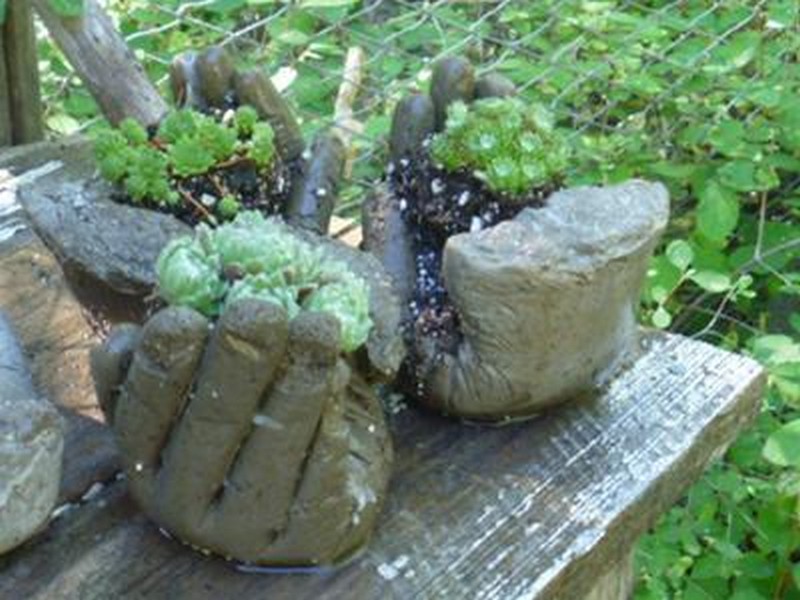
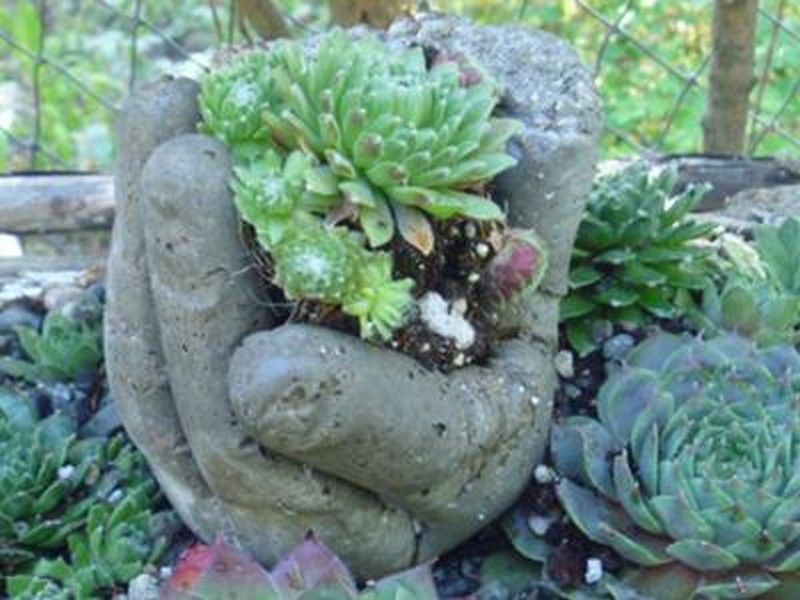

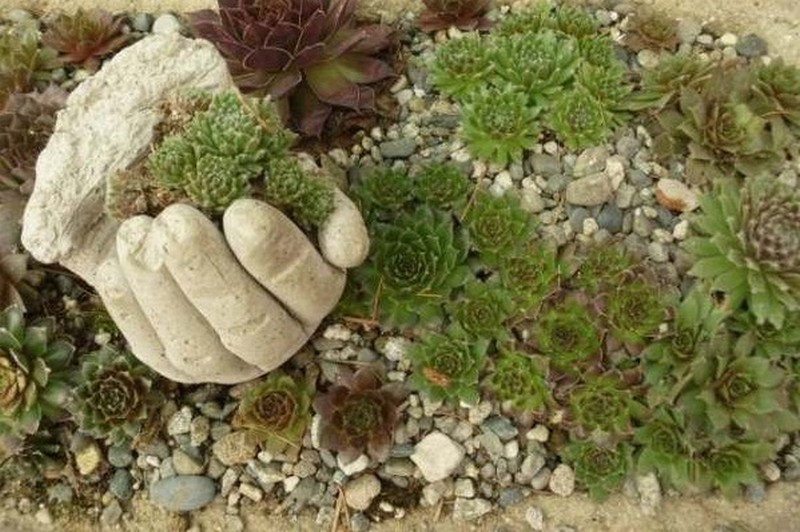
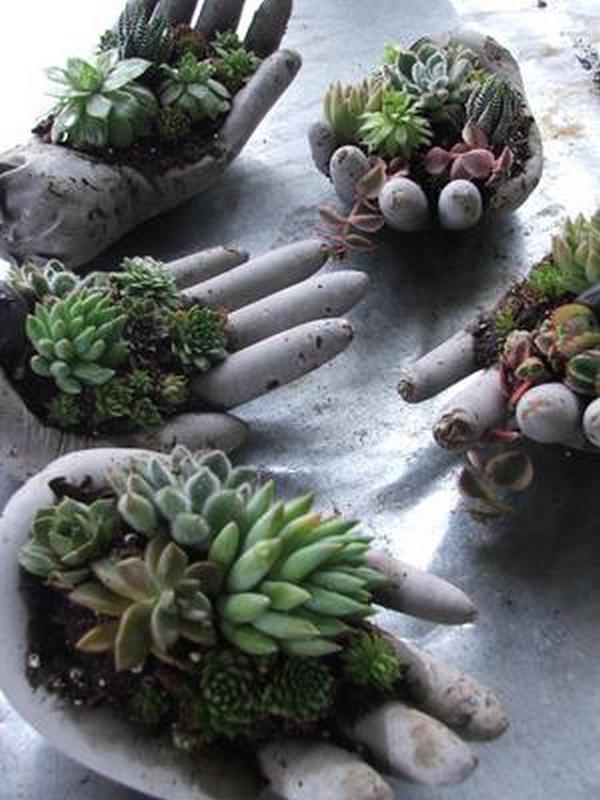

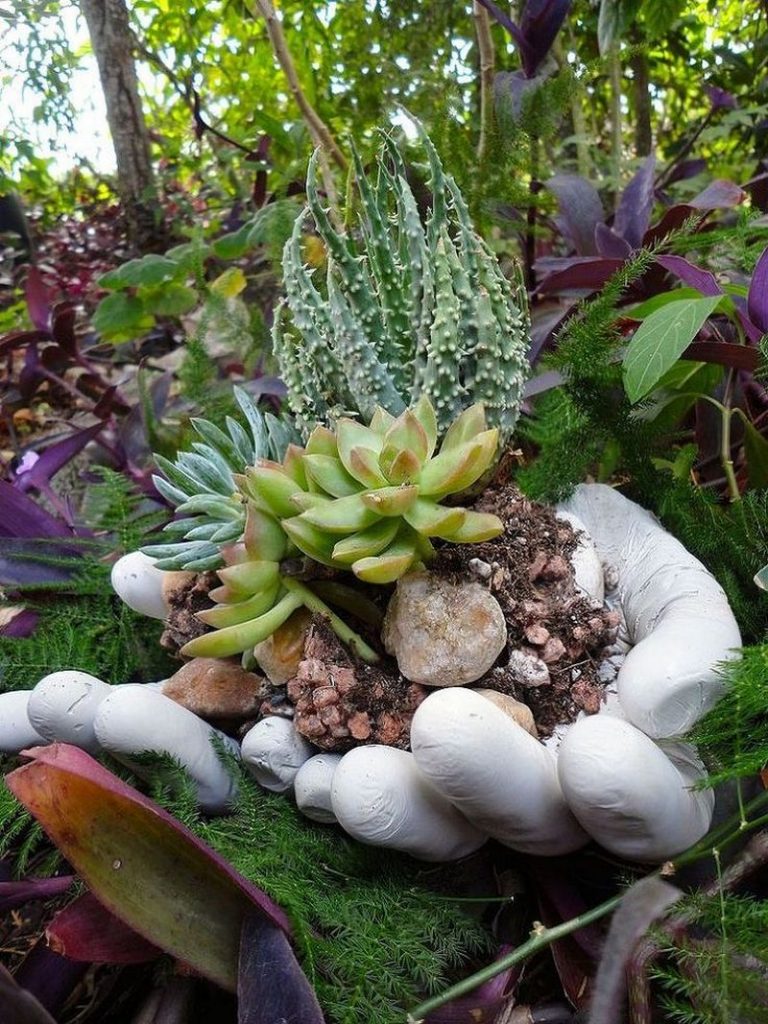
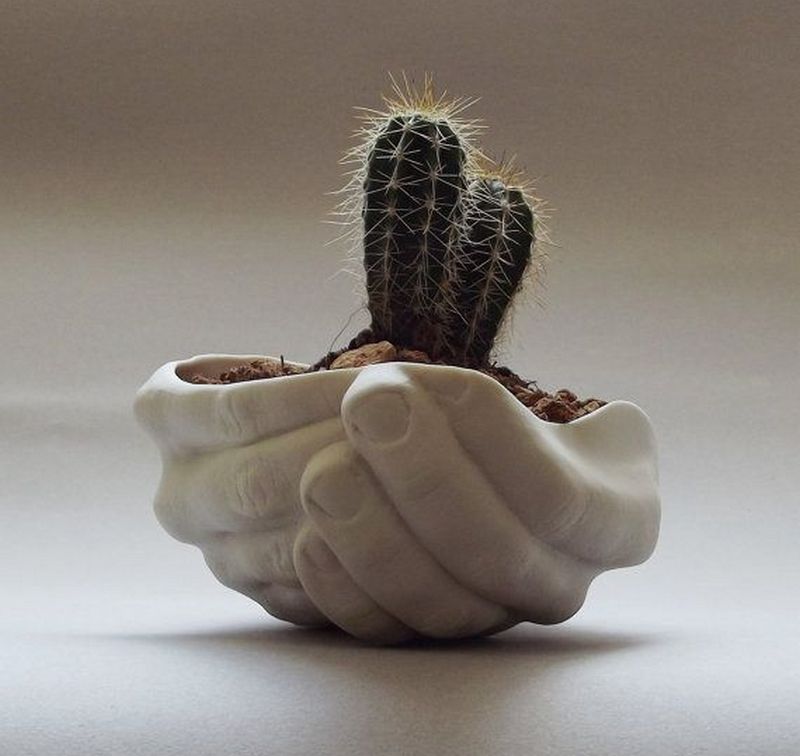

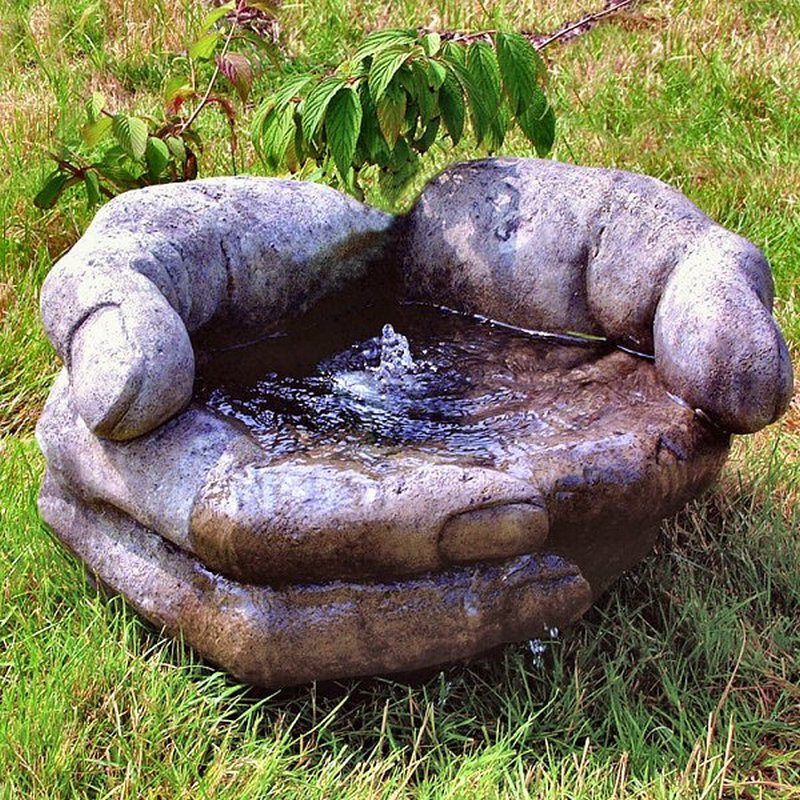
Thanks to Bluefoxfarm and Studio 50 for this great project. You can get step by step instructions here…
Sustainable Practices with Hand Planters
Creating hand planters using sustainable practices not only enhances the beauty of your garden but also contributes positively to the environment. Here’s how you can adopt eco-friendly methods while crafting your hand planters.
Use Recycled Materials
- Repurpose Old Gloves: Instead of buying new gloves for each project, consider using old rubber gloves that might otherwise end up in landfills. This reduces waste and gives a new purpose to materials you already have.
- Eco-Friendly Mix Options: Opt for a soil cement mix that includes recycled components or natural alternatives to traditional Portland cement. This decreases the environmental impact associated with manufacturing cement.
Water Conservation
- Minimize Water Use: During the mixing process, use only as much water as needed to achieve the right consistency. This helps conserve water, a valuable resource.
- Plant Choices: When filling your hand planters, choose drought-resistant plants. These types of plants require less watering and maintenance, making your hand planters not only beautiful but also environmentally friendly.
Non-Toxic Decorations
- Natural Pigments: If you decide to paint your hand planters, use natural or organic pigments. These are less harmful to the soil and surrounding environment compared to synthetic paints.
- Biodegradable Decorations: Consider decorating your hand planters with biodegradable items like twine, wooden beads, or seeds. These materials naturally decompose and do not pollute the environment.
By incorporating these sustainable practices, your hand planters will not only be attractive additions to your home or garden but also a testament to your commitment to the environment. These eco-friendly approaches ensure that your gardening is both beautiful and beneficial to the planet.
Integration of Hand Planters in Landscape Design
Integrating hand planters into landscape design can elevate the aesthetic of any outdoor space. These unique elements bring a touch of personality and creativity, making gardens and patios more inviting and visually interesting.
Focal Points in Garden Design
- Create Visual Interest: Position hand planters at strategic points within the garden, such as at the end of a pathway or by a water feature, to draw the eye and create focal points. The unique shape and texture of hand planters make them standout features that can guide visitors through your garden.
- Theme Enhancement: Use hand planters to reinforce the theme of your garden. For a modern look, sleek, minimalist hand planters can complement the clean lines of contemporary garden design. For a more whimsical or rustic garden, rough-textured or colorfully painted hand planters add a playful touch.
Harmonizing with Plant Selection
- Succulent Displays: Hand planters are particularly effective for displaying succulents. Their unique form provides excellent drainage and creates an eye-catching display that highlights the unusual shapes and colors of succulent plants.
- Herb Gardens: Fill hand planters with aromatic herbs to create functional, fragrant additions to patios and kitchen gardens. They not only serve a practical purpose but also add a touch of rustic charm.
Incorporation into Hardscaping
- Integrated Patio Decor: Incorporate hand planters into the hardscaping of your patio or deck. They can serve as organic table centerpieces or be mounted along walls and railings to enhance vertical space.
- Borders and Edges: Line walkways or garden edges with hand planters to define spaces and add structure to your landscape design. Consistent use of hand planters in this way can create a cohesive and structured look.
Environmental Integration
- Natural Habitats: Position planters near natural areas of your garden to blend seamlessly with the surrounding environment. They can be used to mimic natural rock formations or to house plants that attract butterflies, bees, and other beneficial insects.
- Seasonal Adaptability: Change the contents of planters with the seasons to keep your garden dynamic and interesting all year round. Seasonal flowers, foliage, and decorative elements can be switched out to reflect the changing seasons.
Integrating hand planters into your landscape design not only adds aesthetic value but also enhances the functionality of your outdoor spaces. With their versatility and unique appeal, hand planters provide endless possibilities for personalization and creativity in garden design.
Care and Maintenance Tips for Hypertufa Hand Planters
Hypertufa creations, with their rustic charm and stone-like appearance, are popular for garden ornaments and containers. To ensure these items maintain their beauty and functionality over time, proper care and maintenance are essential. Here’s how you can keep your hypertufa items in top condition.
Regular Cleaning
- Remove Debris: Gently brush off any leaves, soil, or organic debris that accumulate on the surface. This prevents staining and maintains the natural look of hypertufa.
- Wash Surfaces: Use a soft brush and a mixture of water and mild detergent to clean the surfaces gently. Avoid harsh chemicals that can erode the material.
Weather Protection
- Winter Care: Hypertufa is porous, which means it can retain water. In freezing conditions, this water can expand and cause cracking. To prevent damage, move hypertufa items to a sheltered location during winter or cover them with burlap or a frost cloth.
- Sun Exposure: While hypertufa is durable, excessive exposure to direct sunlight can lead to surface cracks over time. Positioning them in partially shaded areas during peak sun hours can help mitigate this.
Crack Prevention and Repair
- Regular Inspections: Check for small cracks or signs of wear. Early detection allows for easier repairs before damage becomes extensive.
- Repair Techniques: For minor cracks, use a hypertufa mix similar to the original material to fill in and repair the cracks. Ensure the mix is well-blended for a seamless fix.
Algae and Moss Control
- Algae Prevention: While some may appreciate the aged look that algae and moss impart, it can be undesirable for others. To prevent growth, ensure your hypertufa items are in well-ventilated areas and not constantly damp.
- Removal Methods: If algae or moss appears, scrub it off with a stiff brush and a solution of one part bleach to nine parts water. Rinse thoroughly after cleaning to remove any chemical residue.
Sealing Techniques
- Use a Sealant: Applying a sealant can enhance the longevity of hypertufa items. It prevents excessive moisture absorption and protects against weather elements. Be sure to use a breathable sealant that allows any internal moisture to evaporate.
By following these care and maintenance tips, your hypertufa creations will continue to add a special touch to your garden spaces for many years. Proper upkeep not only preserves their aesthetic appeal but also ensures their durability through the seasons.
Conclusion
Creating your own hand planter is a fulfilling project that enhances any garden space with a personal touch. With the right materials and a bit of creativity, you can craft a unique piece that stands out. These planters not only add charm to your outdoor areas but also reflect your gardening passion and artistic flair.
If you liked this project, you will also like viewing these gardening ideas…








